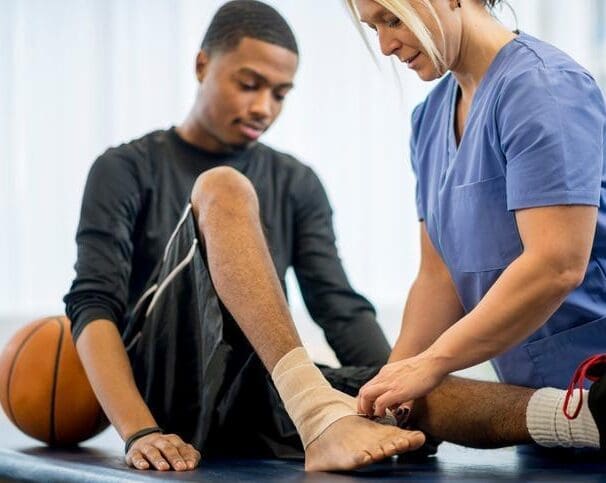HealthProviders DB is a comprehensive database of healthcare providers, including a complete directory of all Sports Medicine Podiatrists.
Podiatrist Healthcare Taxonomy Code 213ES0000X
As of today, the following are the total number of Sports Medicine Podiatrists nationally, in your State, and near your location.
Select a State below to view the list by State. Additionally, you can narrow the list by city, among other options, from the Filter Panel, which you can open by clicking the vertical ellipses ⋮ in the upper right corner of the app.
Alaska – Alabama – Armed Forces Pacific – Arkansas – American Samoa – Arizona – California – Colorado – Connecticut – District of Columbia – Delaware – Florida – Federated States of Micronesia – Georgia – Guam – Hawaii – Iowa – Idaho – Illinois – Indiana – Kansas – Kentucky – Louisiana – Massachusetts – Maryland – Maine – Marshall Islands – Michigan – Minnesota – Missouri – Northern Mariana Islands – Mississippi – Montana – North Carolina – North Dakota – Nebraska – New Hampshire – New Jersey – New Mexico – Nevada – New York – Ohio – Oklahoma – Oregon – Pennsylvania – Puerto Rico – Palau – Rhode Island – South Carolina – South Dakota – Tennessee – Texas – Utah – Virginia – Virgin Islands – Vermont – Washington – Wisconsin – West Virginia – Wyoming
Medicare
The following are the total number of Sports Medicine Podiatrists who accept Medicare in your State, the number who have opted out of Medicare, and the total number excluded from participation in Medicare nationwide.
The diagram below shows all the Sports Medicine Podiatrists across the country, represented by blue bubbles. The larger the bubble, the greater the concentration of providers in that area. Red bubbles represent Medicare-excluded providers, with the larger bubbles indicating a higher percentage of excluded providers in that region. You can change the bubble size to be based on exclusions from the Size menu.
What do Sports Medicine Podiatrists do?
Sports medicine podiatrists diagnose, treat, and prevent foot and ankle injuries in athletes by addressing biomechanical issues, improving gait, and recommending proper footwear and orthotics.
They treat a wide range of conditions, from acute injuries like sprains and fractures to overuse issues such as Achilles tendonitis and plantar fasciitis.
Their work aims to get athletes back to peak performance and reduce the risk of future injuries.
Diagnosis and analysis
Gait analysis: They use tools such as high-speed cameras and treadmills to analyze how an athlete walks or runs, identifying inefficiencies or imbalances.
Biomechanical assessment: They evaluate leg stability, alignment, and muscle function to identify factors that can lead to injury.
Footwear assessment: They evaluate footwear choices for suitability and wear.
Treatment and prevention
Enhancing performance: By optimizing foot health and biomechanics, athletes can improve speed, agility, and overall performance.
Treating injuries: They manage acute and overuse injuries, including stress fractures, ankle sprains, and tendonitis.
Prescribing solutions: They provide treatments such as orthotics, physical therapy, taping, and, if necessary, splints or casts for immobilization.
Preventing future injuries: They help prevent injuries by recommending proper footwear, corrective exercises, and training techniques to strengthen the foot and ankle.

